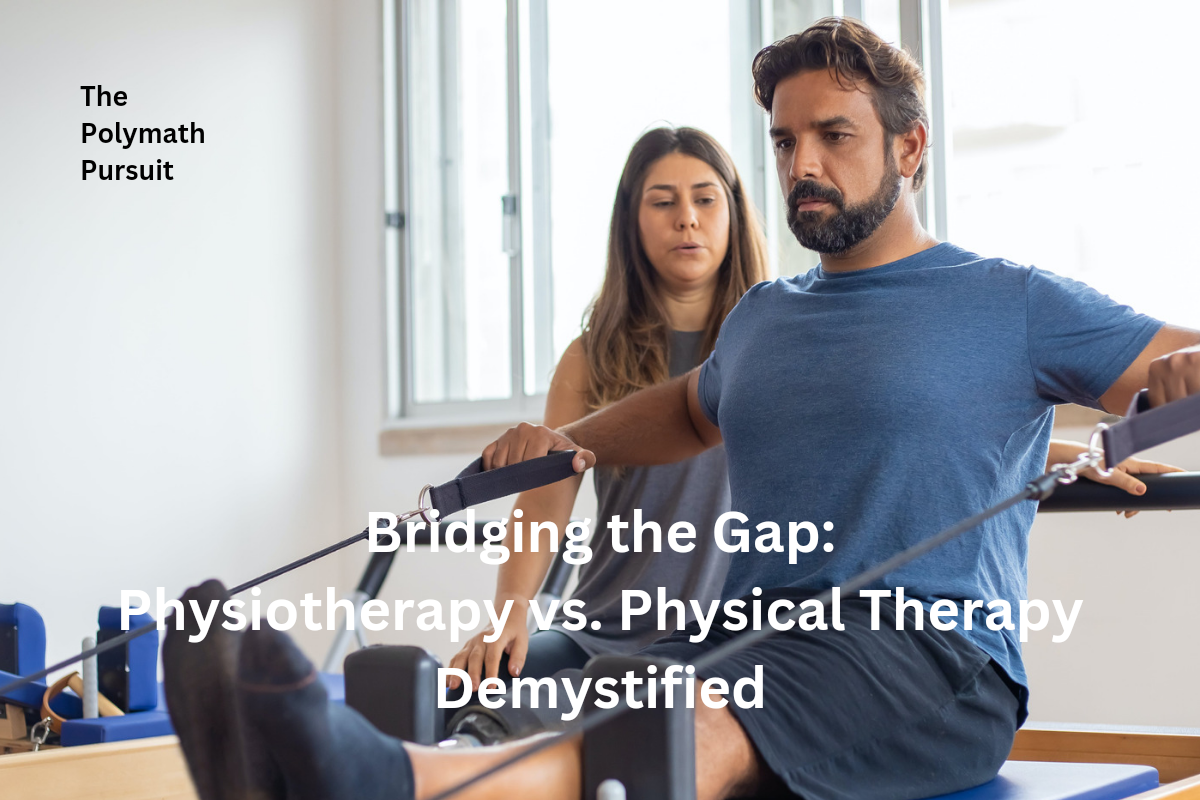Discover the key similarities and differences between physiotherapy and physical therapy when seeking treatment.
Physiotherapy and physical therapy – two terms that are often used interchangeably, but do have some distinct differences. Both focus on restoring mobility and function in people affected by injury, illness or disability. However, their approaches show subtle variances.
Defining Physiotherapy
Physiotherapy aims to develop customized treatment plans to improve mobility and function impacted by disease, injury, aging or other factors. Physiotherapists use manual techniques like massage, stretches and joint manipulation along with exercises and lifestyle advice. The goal is long-term self-management.
Defining Physical Therapy
Physical therapy focuses on diagnosing and treating muscle and motion issues stemming from specific conditions or injuries. Treatments often include hands-on therapy coupled with therapeutic exercises to restore function and prevent re-injury. The aim is to achieve pre-injury mobility.
Key Similarities
While their focal points show some divergence, physiotherapy and physical therapy share core common ground:- Require similar advanced degrees – Utilize customized exercise regimens- Employ hands-on techniques like stretches and joint manipulation – Educate patients on managing conditions- Accept referrals from physicians – Work in diverse settings like hospitals and private clinics
Notable Differences
Physiotherapy tends to take a broader approach focused on overall health/function while physical therapy targets specific musculoskeletal injuries. Key differences also emerge in:
Techniques: Physiotherapists rely more on touch techniques like massage while physical therapists emphasize target exercises.
Terminology: The term “physical therapy” is used more often in the United States while “physiotherapy” is preferred in places like Canada, the UK and Australia.
Philosophy: Physiotherapists highlight injury prevention and whole body health while physical therapists aim to directly treat dysfunction in a particular body part.
Choosing the Right Option
When seeking treatment, consider your condition, goals and personal preferences. Those wanting to address a specific injury may lean towards physical therapy while those with complex health needs might choose physiotherapy. Discuss all options with your physician. In many cases, incorporating both practices can be beneficial.
FAQs
Final Thoughts
In summary, physiotherapy and physical therapy share the same desire to improve mobility and heal the body without medication. They just take slightly different paths to meet this goal. Understanding those subtle distinctions allows you to seek the right treatment for your needs. With patient participation, both practices can effectively renew motion and provide lasting relief.
—END—
#physiotherapy, #physicaltherapy, #physical-therapy, #physiotherapist, #sportsinjury, #chronicpain, #injuries, #rehab, #recovery, #mobility, #massage, #stretching, #exercises, #manualtherapy

